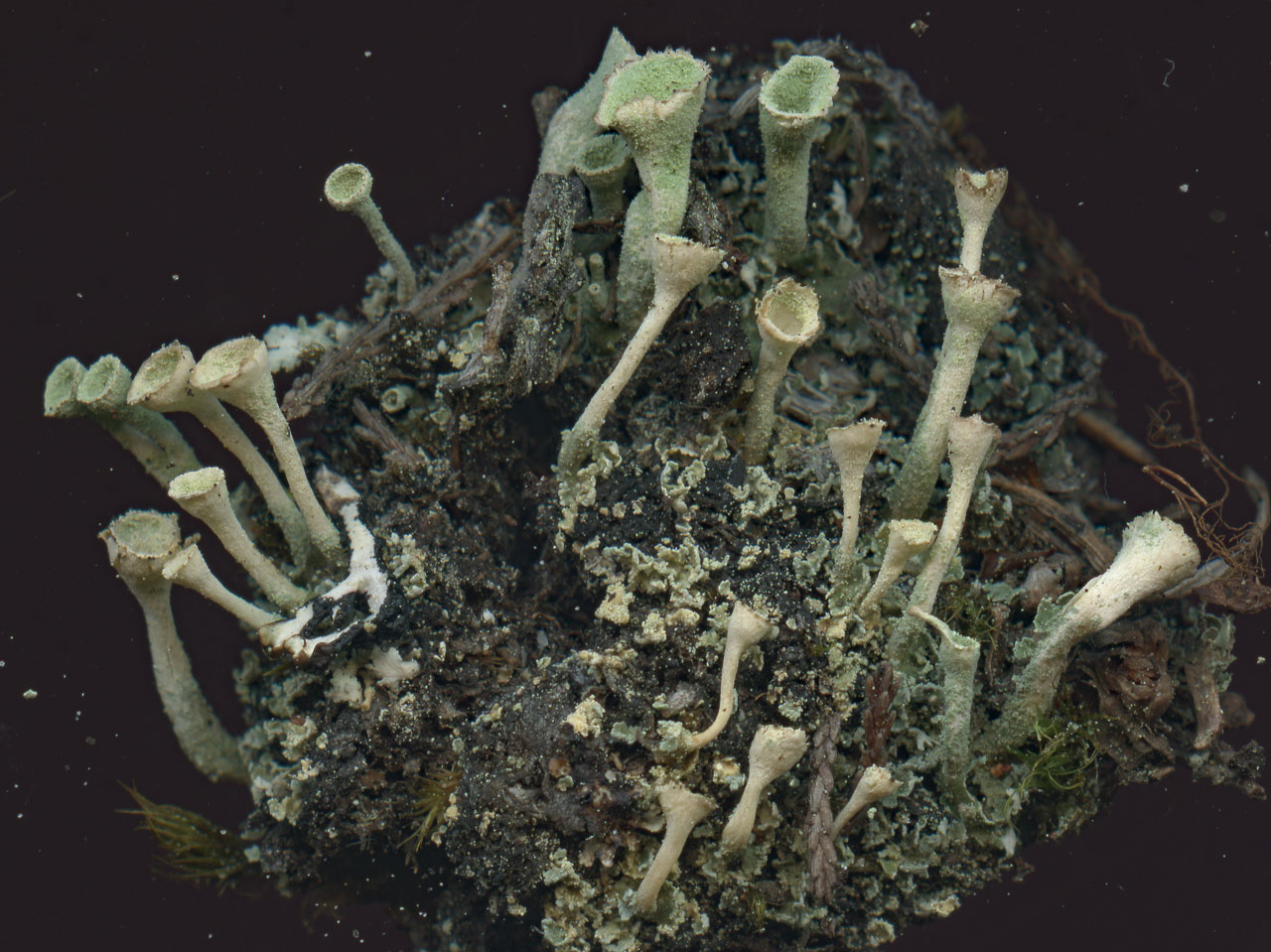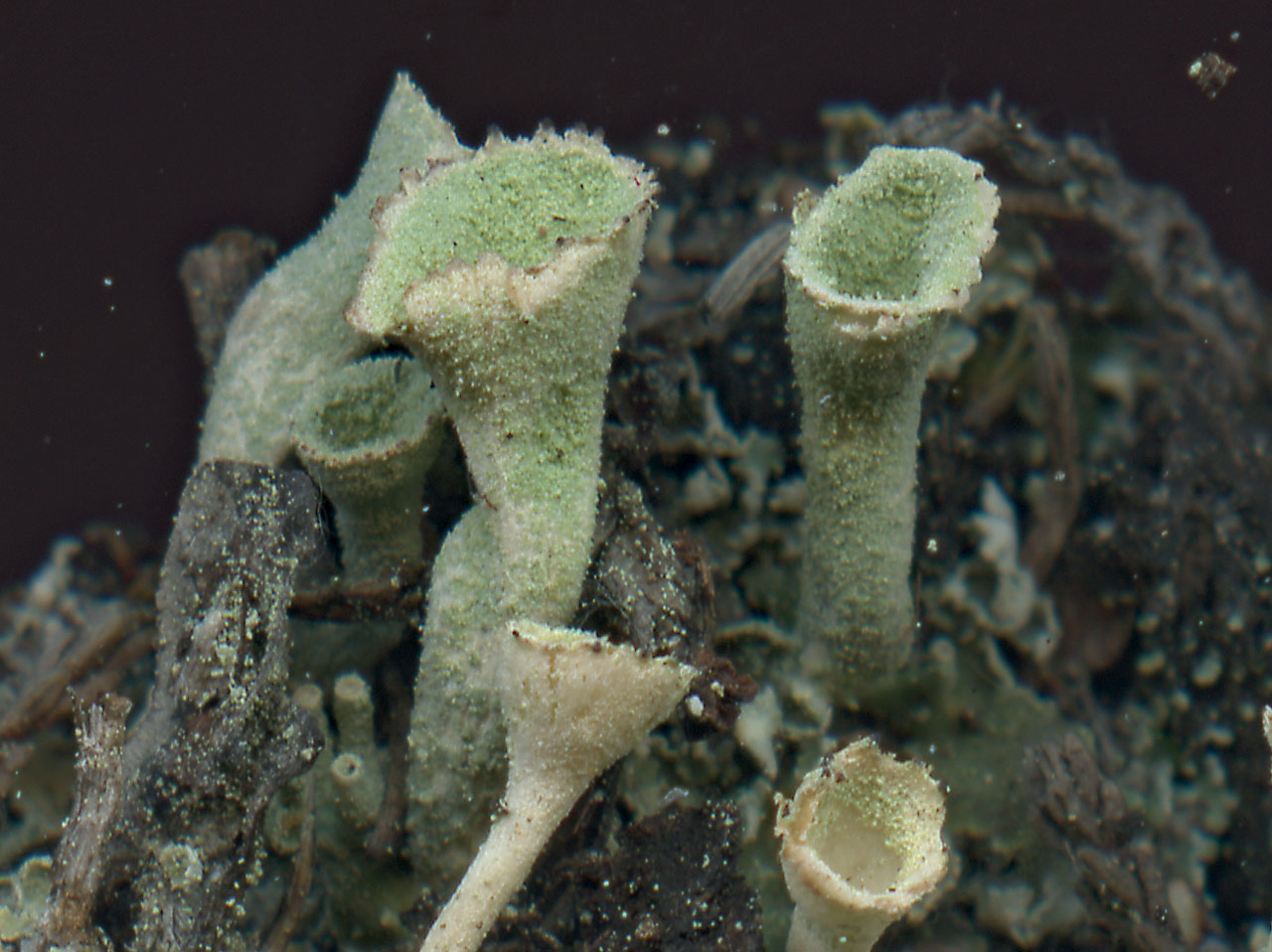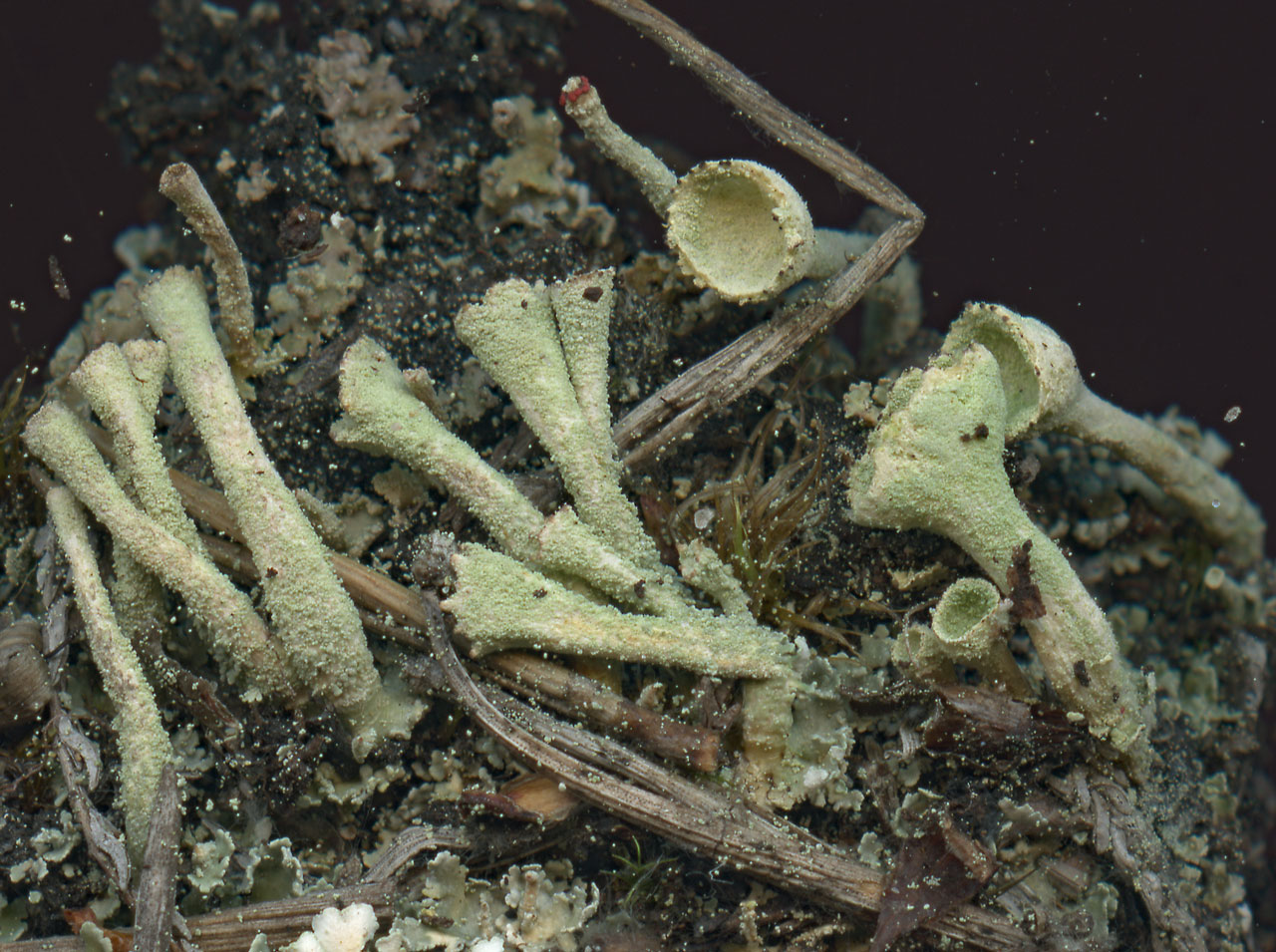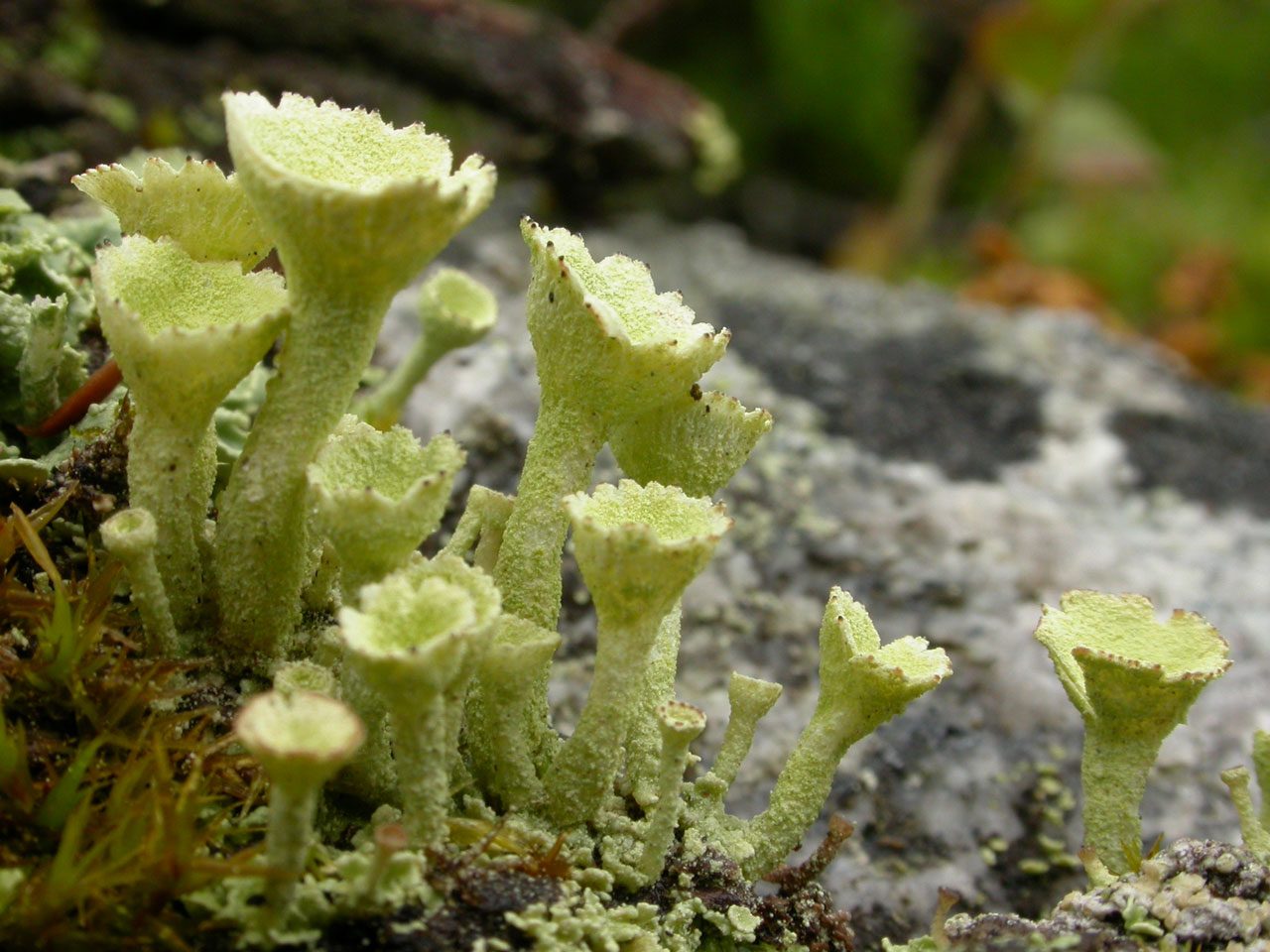Cladonia carneola
A neat little Pixie Cup, with pale yellow-green podetia with the surface within and outside the cups entirely farinose-sorediate. The apothecia are rare but are pale yellow-brown or pale flesh-coloured, rather the red apothecia found on most yellow coloured Pyxie Cups. A boreal species many found in the eastern Highlands. Found on dead wood in native pinewoods and on acid humus in moorland.
Podetia 0.5–1.5 (–2) cm tall, pale yellow-green, appearing ± translucent when wet; cups 3–6 mm diam., abruptly tapered to a long narrow stalk, ± regular with finely denticulate cups with ± even rims which rarely proliferate; surface within and outside the cups entirely farinose-sorediate. Basal squamules often rather small and inconspicuous. Apothecia pale yellow-brown or pale flesh-coloured, rather rare; pycnidia dark brown; both apothecia and pycnidia on rim of cups. Thallus C–, K–, KC+ yellow, Pd–, UV– (usnic and ± barbatic acids, ± zeorin; all British material contains barbatic acid, but its presence in this species is less frequent elsewhere). Needle-like crystals of zeorin develop on the surface of specimens in dried collections.
Related to Cladonia botrytes, which has similarly coloured apothecia and occurs in similar habitats; that species does not have podetia with cups and is not sorediate. In the absence of apothecia, it may be mistaken for the morphologically similar C. fimbriata which is Pd+ red (fumarprotocetraric acid) and is grey, not yellowish green. The chemically and morphologically similar yellow-green C. pleurota has podetia which are ± corticate at the base and thus usually lacking soredia there, but has red rather than pale brown apothecia.
On rotting conifer stumps, more rarely recorded on peat and Calluna stems, in ancient Caledonian pine woods, also on moorland and blanket bog above 600 m; locally frequent.

Almost confined to Scotland (especially the Cairngorm region) and rare in the Cheviot Hills, recorded once from N. Wales (Denbigh).
Britain: Notable
Pino-Bodas, R., Sanderson, N., Cannon, P., Aptroot, A., Coppins, B., Orange, A. & Simkin, J. (2021). Lecanorales: Cladoniaceae, including the genera Cladonia, Pilophorus and Pycnothelia. Revisions of British and Irish Lichens 19: 1-45. Link
Text by Neil A Sanderson, based Pino-Bodas et al (2021)




